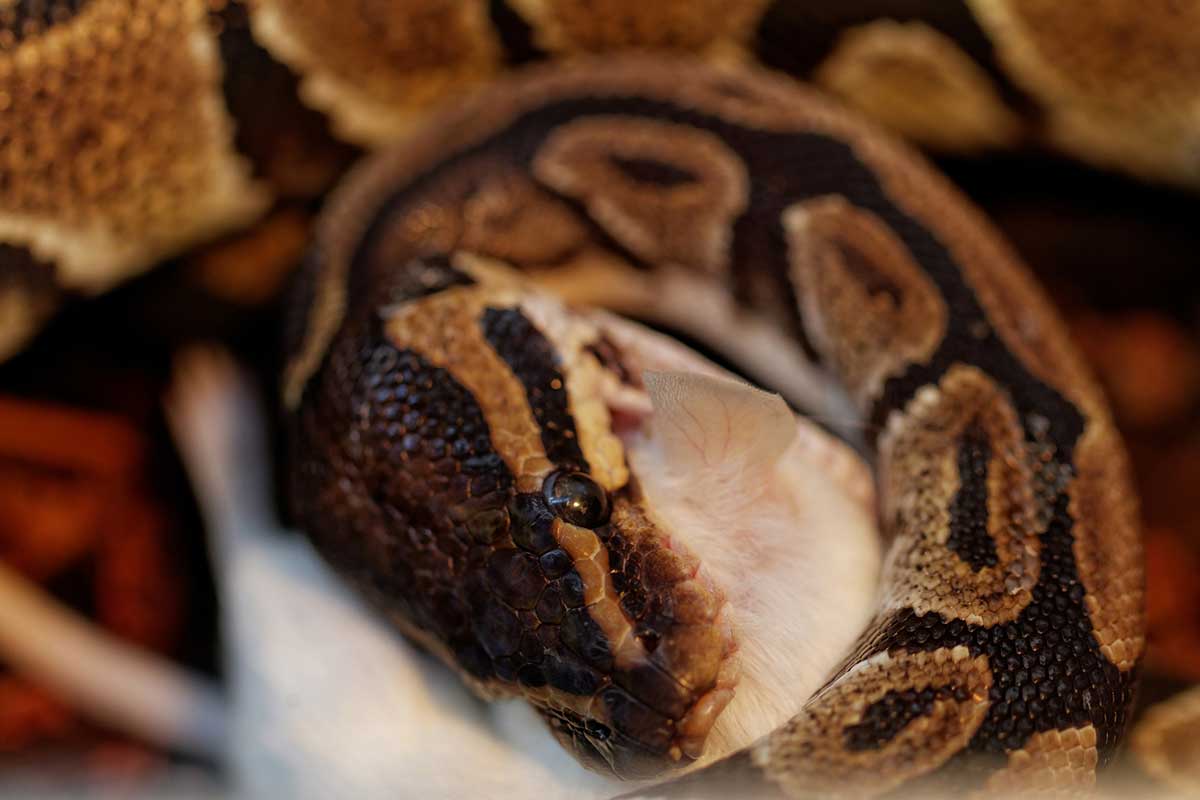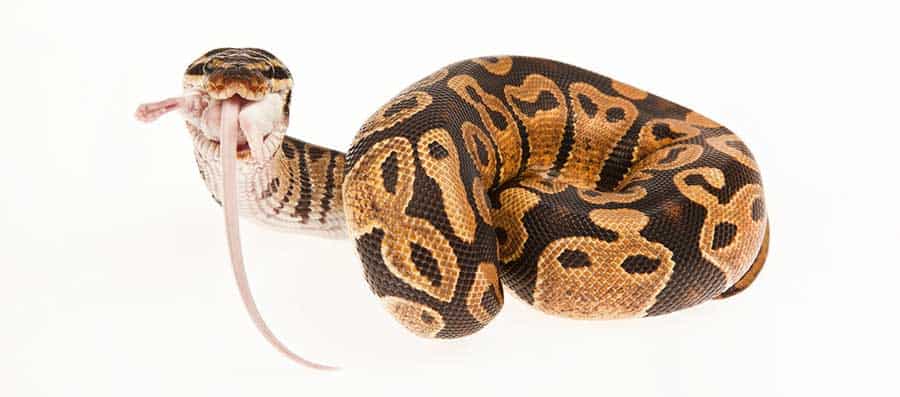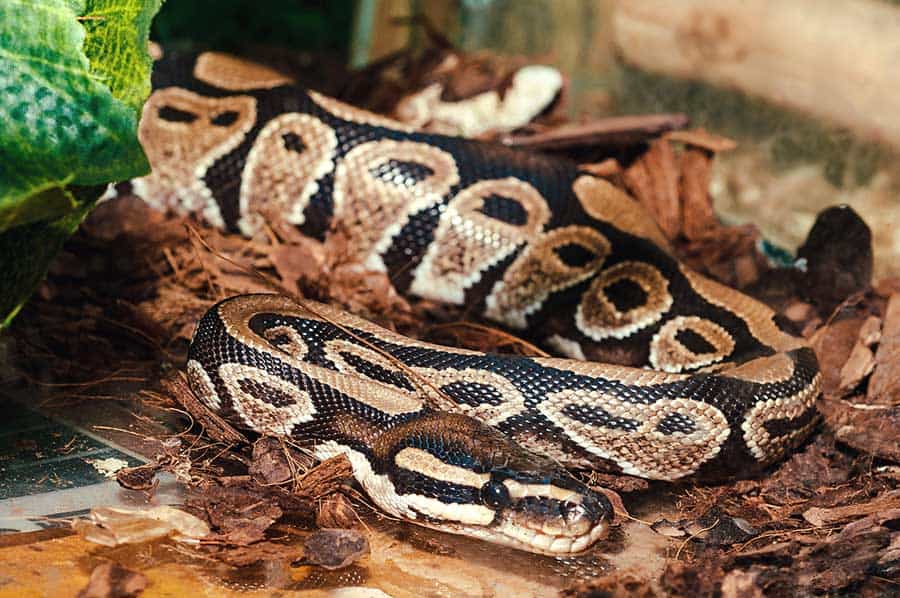
Ball pythons are incredibly popular snakes to own as pets. They are docile, love a good cuddle, and are beautiful to look at. If you are interested in owning one of these lovable snakes, you will need to know what ball pythons eat in captivity.
What Do Ball Pythons Eat? Ball Pythons can eat a wide range of different foods. However, certain food items are better for their health than others, as they contain all the right nutrients your ball python needs to grow and stay healthy. There are staple items listed below as well as optional items that can be added to your ball python’s diet to spice things up and get them interested in their food.
Another important thing to keep in mind is that ball pythons are notoriously picky eaters. At the end of this article, you will find some expert tips on how to feed your fussy ball python. These tips are humane and offer some insight into why your ball python may be refusing their food.
Feeding time is a fascinating task that should be fun for you as well as your snake. Take care in preparing their food, and they will thank you for it! Let’s take an in-depth look at their dietary needs below.
What Do Ball Pythons Eat?
The standard or staple prey items your snake should be eating are ones that contain a healthy dose of protein as well as
Prey items should come from reputable distributors that can be found in your area or online. Buying your snake’s feeders, like rats and mice, from reputable breeders will ensure every meal is free of parasites, bacteria, viruses, and fungi that can harm your snake.
Reputable distributors will also ensure their prey items are kept frozen and that the cold chain is not broken. This way, you’ll always receive quality food for your snake that won’t endanger its health.
Mice
Mice are excellent sources of protein and
The overall nutritional value of an average adult mouse is as follows:
- Protein: 55%
- Fat: 23%
- Calcium: 2.9%
- Vitamin A: 578,272 IU/kg
Mice are high in protein and low in fat, making them a healthy staple option for ball pythons of all ages, especially growing babies and juveniles.
However, their
Rats
Rats are a great source of protein for ball pythons! Unfortunately, like mice, they are fairly low in

An average adult rat’s nutritional value is as follows:
- Protein: 59%
- Fat: 23%
- Calcium: 2.62%
- Vitamin A: 151,389 IU/kg
Rats are larger than mice and are therefore better suited to adult ball pythons to prevent choking or impaction. The low fat content and high amount of protein in rats makes them ideal staple prey items.
Chicks
Baby chickens are very good sources of protein and are low in fat. This, along with their small size, makes them excellent prey items for young ball pythons who are growing and developing muscle.
An average baby chicken contains the following nutrients:
- Protein: 64%
- Fat: 22%
- Calcium: 1.69%
- Vitamin A: 35,600 IU/kg
Because their
Chicks also taste different from rats and mice, so they offer variety to your snake, which increases their interest in their food. Unfortunately, chicks are too small to be viable prey items for most adult snakes because several chicks would need to be fed at every meal in order to make up a full meal.
Optional Prey Items
The following feeder animals can be fed to ball pythons on occasion to add more variety to their diet. However, they do not make ideal staple or primary food items because of their poorer nutritional value.
Hamsters
Hamsters can be fed to ball pythons as an optional or occasional prey item.
An average adult hamster contains the following nutrients:
- Protein: 49%
- Fat: 34%
- Calcium: 2.51%
- Vitamin A: 26,666 IU/kg
Hamsters are not as high in protein as rats or mice and are much higher in fat. This makes them tasty treats, but they should not be used as staple prey items as they can lead to a nutritional imbalance for your ball python and even contribute to obesity.
Because of their less than ideal nutritional value, hamsters should only be fed as additions to a meal and as treat items rather than as a staple food.
Crickets
Can ball pythons eat crickets? Large crickets can be fed to baby and juvenile ball pythons. Unfortunately, crickets are too small to be viable food items for most adults.
- Protein: 65%
- Fat: 35%
- Calcium: 366 mg/kg
- Vitamin A: <1,000 IU/kg
Crickets are high in protein but not nutritionally dependable as a staple item. These should be offered as treat items or as added items to a meal. They also need to be fed live to ball pythons, which can be stressful for your snake and may cause them to shy away from food.
Chunks of Meat (Various)
Chunks of certain kinds of meat can be offered to ball pythons. The nutritional values presented below for common meat items are for the animal as a whole, which includes all of the organs and bones.
As rabbits and minks are too large to feed to a ball python whole, they would need to be cut up. This is perfectly fine to do. However, keep in mind that doing this may diminish some of their nutritional value.
An average domestic rabbit will contain:
- Protein: 72%
- Fat: 13%
- Calcium: 5.93%
- Vitamin A: 6,200 IU/kg
An average mink contains:
- Protein: 72%
- Fat: 11%
An average green frog contains:
- Protein: 71%
- Fat: 10%
- Calcium: 4.29%
- Vitamin A: 25,110 IU/kg
Green frogs are on the optional list even though they are excellent staple feeder items. This is because many ball pythons are not fond of frogs and will reject them as a food source, and they can be expensive to come by.
Supplements
Do ball pythons need

Your snake’s prey items should be sprinkled in a suitable
Top Tips on Feeding Your Ball Python
Ball pythons can go fairly long without eating a single meal! Don’t fret if your snake is occasionally fussy or resistant to feeding, as ball pythons are notorious for being picky.
If your ball python is not eating, it could be for a couple of reasons:
- The temperature or humidity is incorrect in their enclosure
- They may have a high parasite load
- They may be dehydrated
If you suspect any of these things, then check the settings in the enclosure and take your snake to the vet for a check-up to rule out any potential health issues.
If your snake is merely being fussy for no discernible reason, then there are a few things you can do to encourage them to eat:
- If you can stomach it, “brain” the prey item (as in, puncture its skull) so the smell of the prey is increased
- Cover the prey item in some fresh blood
- Offer a smaller prey item
- Make sure the prey item is thawed and at around the same temperature that it would be if it were alive
FAQs About Ball Pythons’ Feeding Habits
What do ball pythons eat in the wild?
Ball pythons mainly eat small mammals, fish, and amphibians in the wild. They are fairly opportunistic, though, and will eat just about any prey animals they can find that are small enough for them to take down efficiently.
Occasionally, they will even eat large insects such as grasshoppers or crickets. However, this is mostly due to accidental ingestion when they are eating other prey items.
Ball pythons constrict their prey. This means they will grab onto their prey with their sharp teeth and coil their body around it. As the prey item breathes out, the coils are tightened, and eventually, the prey suffocates or suffers from heart failure.
Check out our article for more information on how ball pythons kill their prey!
Why should I feed my ball python frozen/thawed prey and not live prey items?
Live prey items can present many issues. Chief among them is the risk of infection or contamination. Prey items have bacteria and parasites that live on their fur and in their gut. When these items are frozen, the harmful organisms die and cannot be transferred to the snake.
Live prey also poses a risk to snakes, as they can fight back and physically harm your ball python. Chicks, mice, and rats can peck or scratch at your snake’s eyes or chew on their bodies and cause them serious harm.
Additionally, live prey items often make a mess. This means when you feed your snake live prey, you will need to clean up fecal matter from the prey item as well as any messes your snake makes. What’s more, parasites live in fecal matter, which can contaminate your snake’s enclosure.
Lastly, live prey items prompt an instinctual hunting response from your snake and can make them more aggressive to deal with when you are trying to handle them.
Slithering Off…
In short, ball pythons in captivity should primarily eat small to medium-sized frozen/thawed prey items that are high in protein and
Standard or staple prey items such as mice, rats, and chicks all boast substantial nutritional value for your ball python. Other items such as hamsters, crickets, and chunks of meat offer some flavorful variety in your snake’s diet, but they are not as nutritionally beneficial.
Ball pythons are docile and make great pets even though they can be fussy eaters. However, if you understand your snake’s dietary needs and refer to our top feeding tips listed above, then your ball python will be eating in no time!

